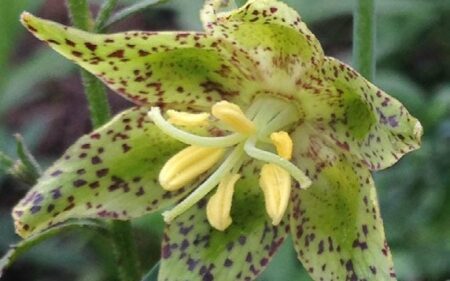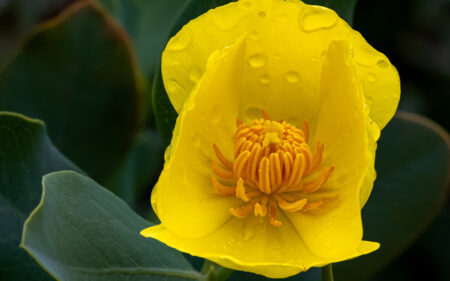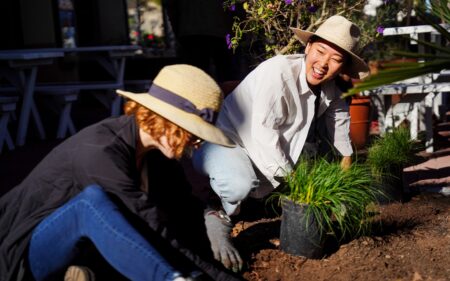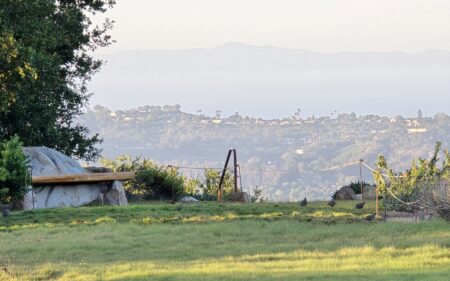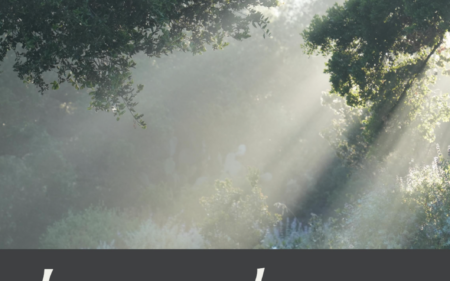From the Field to the Freezer

For many people, the words “seed bank” conjure images of a cavernous vault nestled deep within a mountain surrounded by permafrost or walk-in freezers the size of warehouses. While most seed banks are not quite as elaborate as the Svalbard Global Seed Vault in Norway or the Kew Millennium Seed Bank in England, their contents are no less valuable. The journey every seed makes from the field to the freezer typically begins months, or even years, before it starts its cryogenic slumber.
The Santa Barbara Botanic Garden is home to a regionally significant Conservation Seed Bank housing more than 850 accessions, or individual collections. Our seed bank represents nearly 300 different kinds of rare plants whose distributions range from Northern to Baja California and from the Channel Islands to the Nevada border. These carefully curated seed collections act as an insurance policy against extinction by providing a genetic backup of wild populations. In addition to long-term conservation, our seed collections are used for research, restoration, and reintroduction efforts, depending on the needs of each species or plant population. Seed banking is an important conservation strategy that complements The Garden’s efforts to save native plants in the wild.
Earlier this year, our Rare Plant Conservation Team prepared for a field season that would take us thousands of miles across the state to understand, protect and restore rare plants. Over the course of seven months, we journeyed from populations near sea level to peaks above 11,000 feet in elevation– all in the service of California’s rare plants. The first step in planning for the season was to prioritize which rare plant species we wanted to target.
How Do We Decide What Needs Our Attention?
Of the more than 6,500 different kinds of native plants in California, 2,422 of them are considered rare by the California Native Plant Society (CNPS), making prioritizing our conservation efforts no small task. To start, we identified rare plants across the state in need of conservation support by assessing which species and populations had been seed banked in the past, as well as which populations were facing impending threats or other challenges that we could address via seed collection. Our final targets included plants that are protected under the Federal and California Endangered Species Acts as well as those listed as rare by CNPS but do not have any formal legal protections.
In 2018, rare plants not protected under an endangered species act found support when Governor Jerry Brown launched the California Biodiversity Initiative, which focuses on protecting the state’s natural heritage. The plan highlighted seed banking as an important tool in safeguarding the state’s flora. It named California Plant Rescue (CaPR), a collaboration of federal, state and non-profit partners, as the governing body for securing at least one population of each of California’s rarest plants in conservation seed banks by 2025. This funding is driving the long-term conservation of plants that are extremely rare but lack protection under the endangered species act. As a CaPR member, The Garden is using this funding to make conservation seed collections and to house them in our nationally accredited Conservation Seed Bank.
Researching and Mapping Our Rare Plant Targets
Once we developed our target list, which included more than 130 different kinds of rare plants, we began scouring herbarium records and other data sources to determine where the plants occur, when they bloom and which specific populations we intended to visit. And we’re not just collecting seeds. Although long-term conservation is the end goal, we also collect seeds so we can grow plants in our greenhouse to produce more seeds for restoration and/or research. Other times, seed collection is part of a larger project aimed at investigating the status, biology or ecology of a rare plant and conservation seed banking is added on as a bonus to that work. Regardless of our motivations, we must have the who, what, where and when figured out before we can go into the field.
Time to Take to the Open Road … and the Backcountry
Although looking for plants may sound straightforward, rare plants can be challenging to find and difficult to identify. Our field work takes us to infrequently visited locales across the state, often requiring technical 4-wheel driving and rugged hiking to access remote plant populations. We search for rare plants in habitats ranging from sand dunes to grasslands, shrublands to forests, and even treeless mountain tops. Encounters with rattlesnakes and black bears are emblematic of the field season, as is bushwhacking through chaparral or cutting our way through head-high poison oak. These expeditions offer a unique glimpse into the wilds of California and provide opportunities to make important observations of ecosystems across the state. They are at once humbling and awe-inspiring.
When we visit a rare plant population for the first time, we collect as much data about the occurrence as possible. This includes information about where the plants are growing, how many there are and which plants they co-occur with. We also document pollinator observations and if there are any immediate or pending threats to the persistence of the population. Even if we do not find our target species, we still document where we looked and what we observed at the site so that there is a record of our search.
Signs a Seed is Ready for Collection
The best time to collect seeds is when the plants are naturally dispersing them. We use all of our senses to determine when seeds are ready – looking to see whether the fruits appear brown, feel dry or whether we can hear seeds rattling around inside of the capsules. We cut or peel fruits open to ensure that the seeds are mature, often appearing dark black or brown and feeling firm to the touch with no give when pressed with a fingernail or knife. Once we have determined that the seeds are ready to be collected, we are careful not to collect more than 5-10% to ensure we do not affect long-term population persistence. We also look for signs of herbivory (consumption of plants by animals) and granivory (consumption of seeds), so that we know how many viable seeds are available. Our goal is to collect from at least 50 different plants across the population to ensure a diverse sample and to preserve at least 3,000 seeds from each rare plant population. Sometimes, rare plants occur in very small patches or produce only a few seeds per plant, which can lead to small but important collections. In such cases, we may return in a future year to increase the size of our collection and secure additional genetic diversity.


Preparing our Samples for Future Research
In addition to digital data collection, we also document occurrences by collecting herbarium specimens, which act as a physical record of our observations. To do this, we collect fresh plant material, including stems, leaves, flowers and fruits in a plant press. A press consists of placing plant material between newspaper sheets and then sandwiching each layer between cardboard. We wrap a belt around the press to flatten the plants and place them in a plant drying cabinet once back at The Garden. When they are dried, the specimens are mounted by our herbarium volunteers and stored in The Garden’s Clifton Smith Herbarium (a library of dried plants) in perpetuity.
Whenever feasible, we also collect leaf tissue that is dried on silica desiccant and stored in The Garden’s tissue bank for future genetics research. This combination of physical and digital data is used to update the status of each population and to prioritize future conservation and research.
Counting down to –4° F Slumber
Once collected, we bring seeds to the Pritzlaff Conservation Center, where they are cleaned, counted and packaged for long-term storage in The Garden’s Conservation Seed Bank. Prior to freezing, the seeds are dried to approximately 35% relative humidity, lowering their metabolic rate and reducing the risk of ice crystal formation during freezing at -4° F (-20°C). This allows us to extend their viability in a kind of suspended animation. The seeds are still aging, but much slower than they would under ambient conditions. As an extra security measure, a portion of each seed collection is sent to the national seed bank facility at the USDA National Laboratory for Genetic Resources Preservation in Fort Collins, CO for backup storage. Historically, seed banks focused on agricultural crops, but seed banking has become increasingly recognized as a critical tool for native plant conservation. We are still learning how long native plant seeds can live under frozen storage, but this cryogenic slumber is predicted to extend seed viability by multiple decades, if not longer.


Safeguarding California Native Plant Diversity for the Future
Despite the challenges of drought, wildfire and the uncertainty of a global pandemic, the Rare Plant Conservation Team’s 2021 field season was a success. We collected data related to 215 different rare plant populations across mainland California and the Channel Islands. Our data is being used to inform land managers, conservation practitioners and policymakers as they tackle decisions about habitat management, land use, plant conservation, and state and federal budgets. We also made 87 conservation seed collections this year. They are currently being cleaned by our staff and dedicated Seed Team volunteers for long-term storage in our seed bank. Many of our collections represent the first time that a species was brought into long-term conservation via seed banking. Others increased the diversity of our existing collection or will be used for research and restoration. As living collections, conservation seed banks require frequent attention, curation and testing to assess their viability, make use of seeds, and refresh collections as they age. This summer, with support from a generous donor, we were able to bring in three undergraduate interns to help clean, curate and test seeds for viability. As we look toward the 2022 field season, our Rare Plant Conservation Team will expand The Garden’s conservation footprint across the state and continue to grow and care for our Conservation Seed Bank collections to safeguard California’s priceless floral diversity for the future.


 Donate
Donate